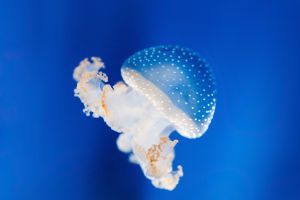The giraffe, with its towering height and long neck, is one of the most recognizable animals in the world.
While its neck often garners the most attention, the giraffe's tail also plays a crucial role in its daily life.
Despite its seemingly simple structure, the giraffe's tail serves multiple functions, providing a fascinating glimpse into the adaptability and survival mechanisms of this majestic creature. Here’s an in-depth look at the various functions of a giraffe's tail.
1. A Powerful Insect Swatter
One of the primary functions of a giraffe's tail is to act as an effective defense mechanism against insects. In the savannahs and woodlands where giraffes roam, insects like flies, mosquitoes, and ticks can be relentless, especially during certain seasons.
These pests can bite and irritate the giraffe’s skin, leading to discomfort and potential health issues.
The giraffe's tail is perfectly adapted to deal with this nuisance. It is long and flexible, measuring around three feet in length, and ends with a tuft of coarse, bristly hair.
This structure allows the giraffe to swat away insects from different parts of its body, including hard-to-reach areas.
The tufted hair at the end of the tail is particularly effective, creating a wide sweep that maximizes the tail's insect-repelling capability. This natural flyswatter helps protect the giraffe's skin from bites, reducing irritation and the risk of infection.
2. Communication and Social Interaction
While insect control is a crucial function, the giraffe’s tail also plays a role in communication and social interaction within giraffe groups. Giraffes are generally social animals, often found in loose herds that provide mutual support and protection.
In this context, body language is an important means of communication, and the tail is part of this nonverbal system.
Giraffes use their tails to signal their emotional state or to communicate with other members of the group. For example, a giraffe may flick its tail in quick movements when it is agitated or nervous, possibly signaling the presence of predators or other threats nearby.
Conversely, a giraffe with a relaxed, slowly swaying tail is usually calm and at ease, signaling a safe and peaceful environment to others. This subtle tail movement helps giraffes convey their mood and reactions without making noise, which could attract unwanted attention from predators.
3. Balancing the Body
Giraffes have long, slender legs and a tall neck, making balance an essential aspect of their movement, especially when running or maneuvering through their habitat. While their long legs and neck provide the primary support for balance, the tail also contributes to this function.
During movement, particularly when running at speeds of up to 35 miles per hour, a giraffe’s tail helps with counterbalance. The tail moves in coordination with the rest of the body, aiding in maintaining stability and preventing awkward falls.
This subtle yet vital role in balance ensures that giraffes can quickly escape predators, such as lions, which rely on speed and surprise to catch their prey.
4. A Sign of Health and Maturity
Interestingly, a giraffe's tail also serves as an indicator of its overall health and age. A thick, well-kept tail tuft is often a sign of a healthy giraffe. In contrast, a sparse or damaged tail can suggest that the animal may have encountered health issues, physical injuries, or even close calls with predators.
Additionally, the length and fullness of a giraffe's tail tuft are associated with maturity, as younger giraffes typically have shorter, less developed tails. This characteristic may play a role in the social dynamics of giraffe groups, potentially influencing interactions such as grooming or mating behavior.
The giraffe's tail is far more than a simple appendage. It is a versatile tool that aids in insect control, communication, balance, and even social interaction.
This multi-functional tail showcases the giraffe's adaptability to its environment, allowing it to thrive on the African savannah. Understanding the tail’s role offers a deeper appreciation of how giraffes survive and interact within their ecosystem.


